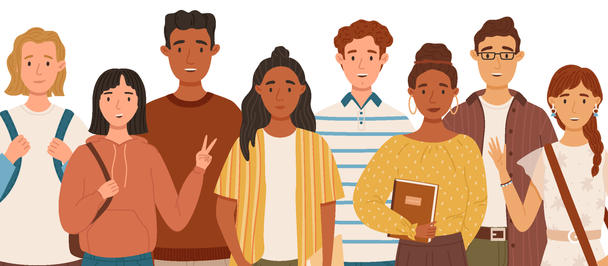“With me, or against me”: The intensification of political polarization in Latin America and the Caribbean
February 28, 2023
Based on what we see on the news and social media it is easy to conclude that Latin American and Caribbean societies are more divided than ever. Social unrest, close electoral races, and legislative gridlock are often attributed to high levels of polarization.
Using data from Variety of Democracies (V-Dem), this #GraphForThought looks at what happened to polarization in the region in the last two decades. V-Dem uses survey data to measure if a “society is polarized into antagonistic, political camps” and how this affects social interaction. It defines societies as highly polarized if supporters of opposing political camps are reluctant to engage in friendly interactions, for example, in family functions, civic associations, leisure activities and workplaces.
Growing political polarization is a global trend, however, LAC is the region in which polarization has increased the most in the last 20 years. In the early 2000s, LAC scored well below the global average and was the second least polarized region in the world. Starting around 2015, however, polarization started to grow faster than the global average, surpassing it around 2017. Today, LAC is amongst the most polarized regions in the world, second to only Eastern Europe and Central Asia.
To explain an increase in polarization, we need to distinguish between two phenomena that take place as societies break up into clusters (as defined in the classic paper by Esteban and Ray (1994)): identification vis a vis alienation. The more people identify with a given group and the more characteristics they share, the stronger their sense of identification with this group. At the same time, the more they identify with a group, the stronger the sense of distance from others that do not share specific characteristics, understood as alienation.
While not new, the processes of identification and alienation are being increasingly shaped by the way we consume information. As more people get their news and information from social media and the web, algorithms use echo chambers or filter bubbles to decide what kind of information is displayed based on a user’s search history and networks. Concerning political ideas, this algorithm promotes the creation of ideological bubbles that tend to confirm pre-conceived political beliefs. As a result, there is a weakening of political deliberation as people hardly get exposed to opposing views.
When people sort themselves into antagonizing positions the role of a third party that can mediate among them is critical to process conflict. In modern societies, this is the role of state institutions. However, in the case of high political polarization, institutions are less likely to be seen as neutral mechanisms for processing conflict, rather than as partisan tools for exercising power. When this becomes the case, violent sprouts are more likely to occur.
However, governments can pursue policies that build common ground and reduce animosity between groups, helping maintain peaceful societies and social contracts that are conducive to development. Rethinking social protection system through the lenses of universality (see Chapter 5 Regional Human Development Report 2021 for a comprehensive discussion on this) could reduce social distance and foster contact points among certain social clusters. Similarly, recreational, and cultural public spaces, and in general the provision and quality of public goods, can also serve this purpose. Finally, social cognition literature (Batson et al (1997)), shows that inducing empathy for a member of a stigmatized group can improve attitudes toward the group as a whole.


 Locations
Locations



